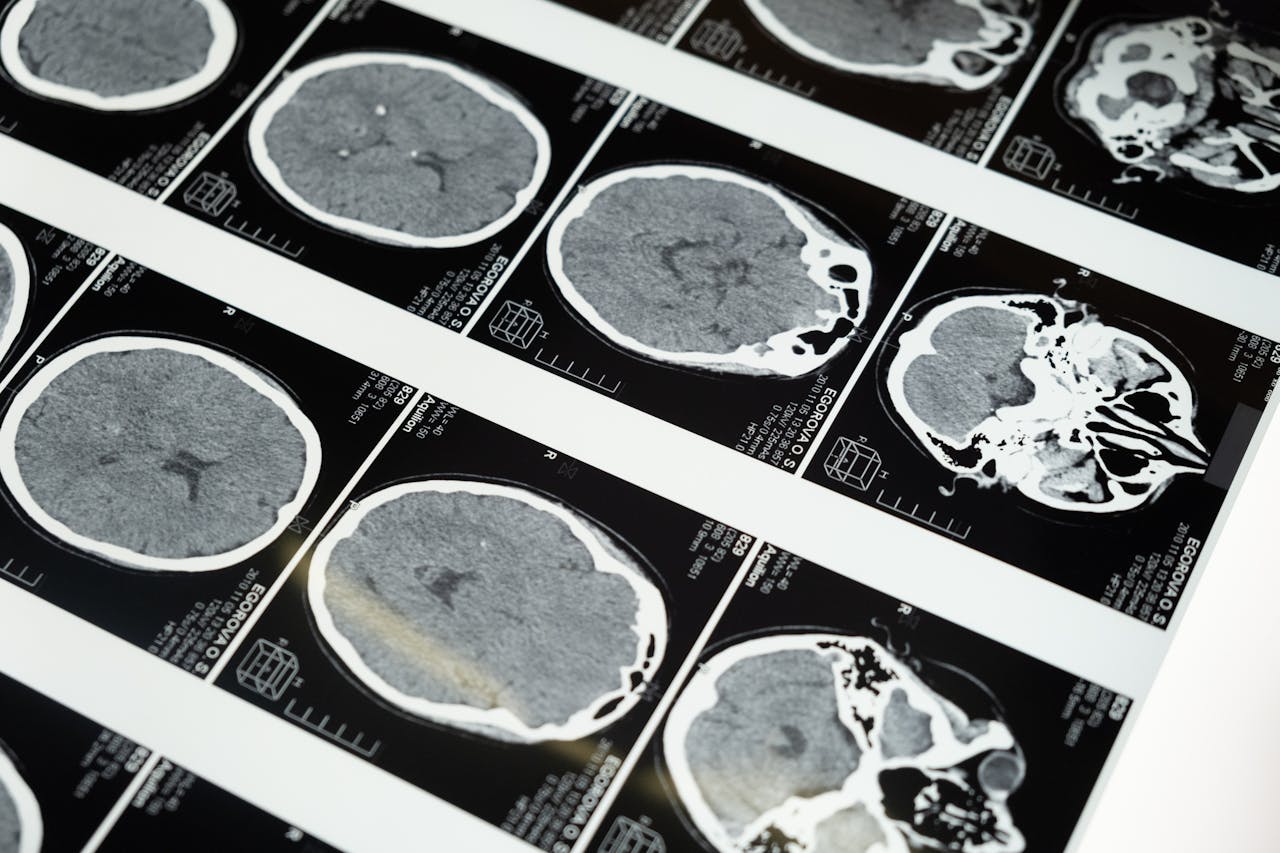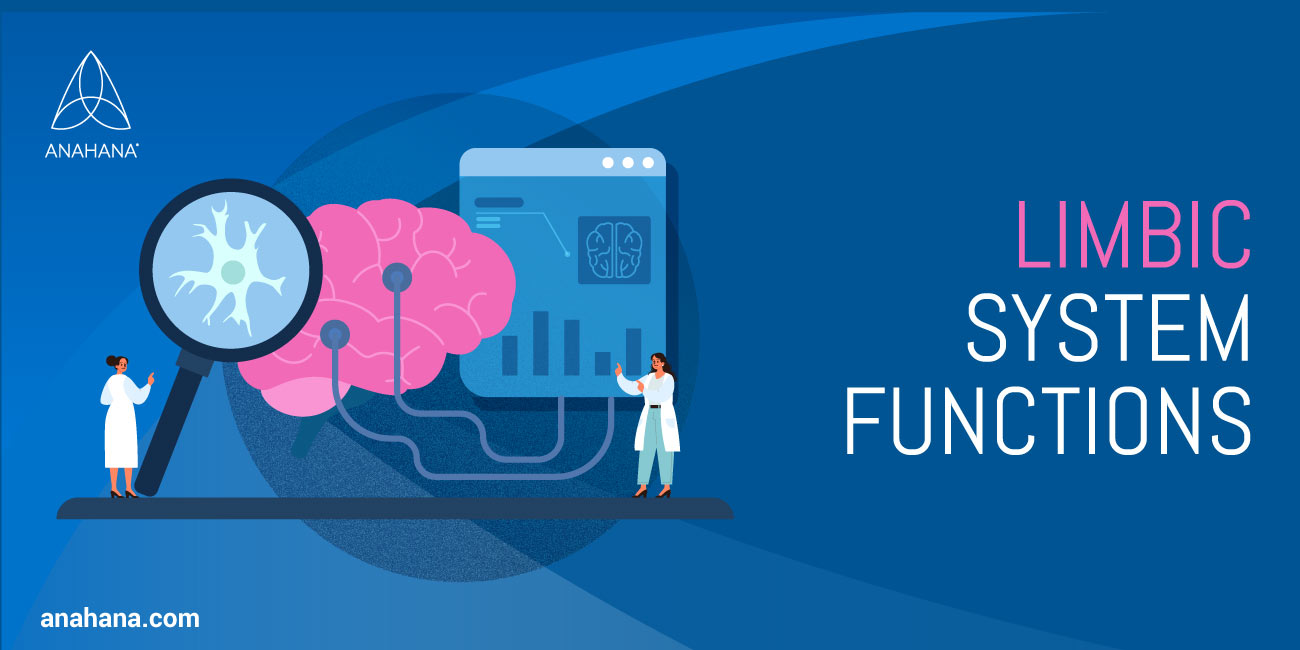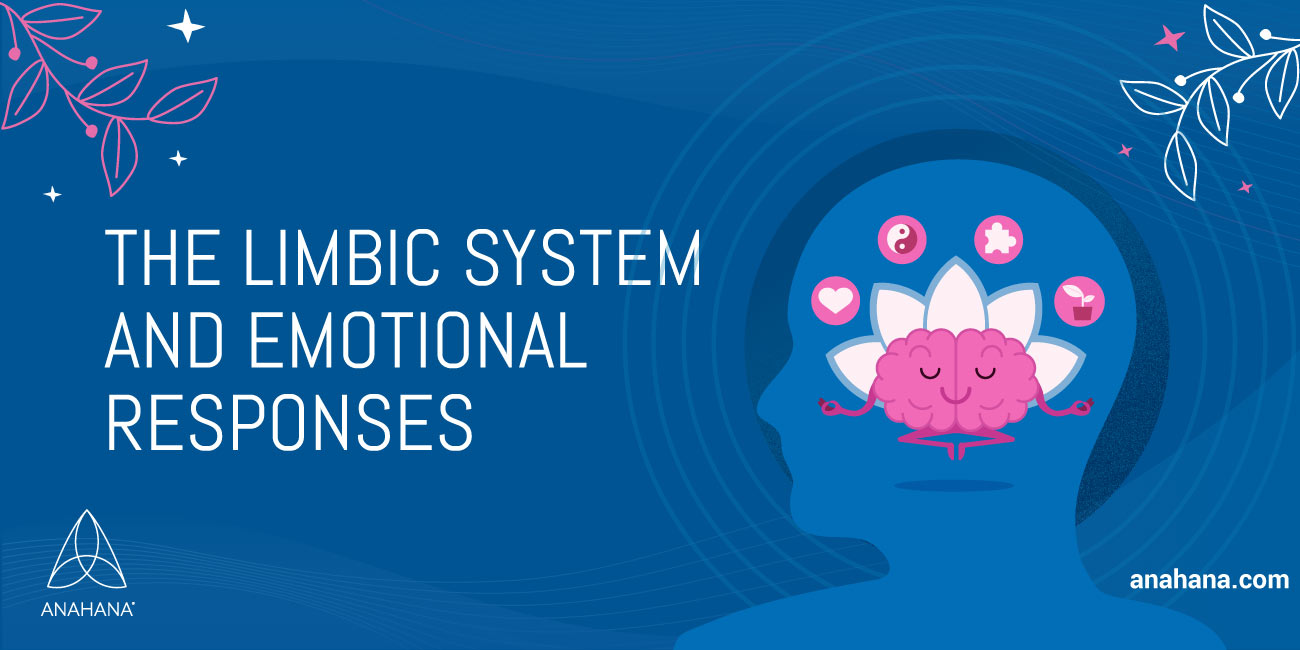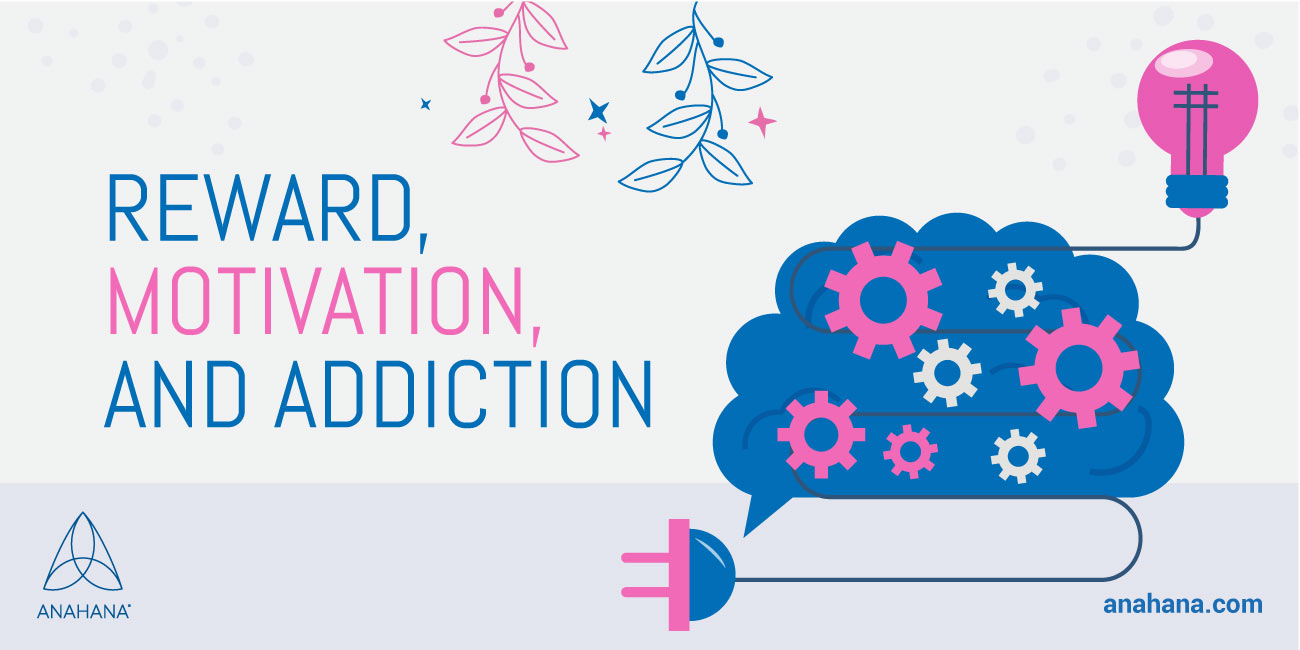
Table of Contents
According to evolution, the limbic system is among one of the oldest parts of our brains. According to theories such as the Triune brain model, it is also commonly called the emotional brain or the emotional nervous system.
Key Takeaways
- Definition: The limbic system, located in the brain involved, handles emotions, behavior, and memory.
- Components: Includes the hippocampus, thalamus, hypothalamus, amygdala and nucleus accumbens.
- Functions: Regulates emotional responses, memory, learning, and sexual arousal.
- Location: Found in the temporal lobes, under the cerebrum.
- Interconnections: Interconnected brain structures link to the prefrontal cortex, influencing decision-making.
- Significance: Crucial for survival mechanisms and emotional well-being.
Research within the neuroscience field has provided insight into the limbic system's roles in behavioral and emotional responses and how it shapes our behaviors. The limbic system can also be called the limbic lobe.
Definiton of the Limbic System
The limbic system is a brain region that acts like a networking system. With many interconnected parts, it is responsible for controlling a variety of emotional drives as well as being critical in memory formation. Major limbic system components include the hippocampus, amygdala, thalamus, and hypothalamus. Its location is underneath the cerebral cortex.
History of the Limbic System
Some of the first empiric theories regarding the Limbic system came from Aristotle, the ancient Greek philosopher. He stated the center of intelligence and emotions came from the heart and that memory generated learning based on emotions and feelings. Later would come Galen, also known as Aelius Galenus, a neuroanatomist who discovered cerebral (brain) functions and the autonomic nervous system. His views opposed Aristotle’s in that he believed that the brain was the center of intelligence.
In the middle ages, neuroanatomy and neurophysiology were becoming more advanced. A significant discovery involved linking several brain structures to functions such as visual perception and other sensations. The term limbic system originates in the contemporary age around the nineteenth century. The two prominent, influential figures of this time were Charles Darwin and American Psychologist William James.
Darwin wrote about two significant ideas. The first was that the emotions of humans were similar to animals in that they expressed emotional behaviors similarly observed in animals. The second was that emotions are universal and distinct, independent of cultures or societal norms. James, on the other hand, James proposed that emotions were simply in response to physical changes going on throughout the body and were relayed to the brain, thus allowing individuals to interpret their own emotions. 1978 was the year that the term “limbic lobe” was first coined by the French anatomist Paul Brocha. It is a translation from the Latin word for the rim.
Research is still looking into the limbic system theory in the twentieth century. Understanding the neural circuitry, the anatomical boundaries, and the behavioral reflexes are just some of the areas currently being investigated regarding the limbic lobe.
For example, recent work is on understanding the links between the vestibular (balance) and limbic systems in regulating emotions. The vestibular system is essential in body balance and well-being. Vestibular stimulation techniques can effectively relieve stress and potentially contribute to emotional well-being. Therefore, vestibular stimulation techniques could influence emotions. This review goes into more detail about emotions as aroused states of the mind and that these techniques depending on the stimulation region, can influence certain emotional states. They give an example of the spinning chair used to treat mania or elevated arousal in the nineteenth century. The authors suggest that research in this area supports vestibular stimulation as a therapy for stress-related disorders as an alternative to drugs and other therapies. However, they address that the mechanisms leading to these techniques' benefits are still being explored and are essential for optimizing therapeutic benefits.
Limbic System Functions
 As mentioned, the limbic system works as a signaling system to form and contribute to complex emotions and other brain functions such as memory. Despite many limbic system components, the point is that they often work together. For example, while fear is most commonly associated with the amygdala, other brain areas also respond to fear.
As mentioned, the limbic system works as a signaling system to form and contribute to complex emotions and other brain functions such as memory. Despite many limbic system components, the point is that they often work together. For example, while fear is most commonly associated with the amygdala, other brain areas also respond to fear.
Puberty is a crucial stage of limbic system development as significant changes occur. For instance, the amygdala develops further and, combined with hormonal changes, may give rise to intense emotions such as anger, fear, and aggression. Additionally, progressing through adolescence, the limbic system becomes under greater control of the Prefrontal cortex. This area only fully develops at 25 and is essential for reasoning, problem-solving, and impulse control. The prefrontal cortex development is a biological reason why there's a perception of teenagers as moody due to these underdeveloped limbic structures.
Primary Structure of the Limbic System
Hippocampus
The limbic system includes the Hippocampus, which comes from the Greek word for seahorse. It is located very deep within the brain and is associated with learning and specific aspects of memory, such as spatial memory and spatial navigation.
In terms of memory, memory encoding: the process of allowing information to be encoded, stored, and recalled, is one of its major functions. Memory encoding, for instance, can allow us to remember where we ate lunch yesterday. Memory consolidation is another aspect of memory that the hippocampus is responsible for, allowing us to form more stable and long-lasting memories.
Amygdala
The limbic system also includes the Amygdala is shaped like an almond and is responsible for emotional responses such as pleasure, anxiety, anger, and fear. The amygdala plays a role in memory and is near the hippocampus in the brain. Specifically, involving how firmly memories are stored, as memories are often associated with strong emotional ties that tend to stick around for much longer.
The connection between memories and fear is through the amygdala, which can help form new memories related to fear. Learning through fear makes previous concepts mentioned, such as memory consolidation, easier.
It is an area of the brain that can create quite intense emotions. Informally, responses triggered by the amygdala are called “fight or flight,” which, combined with the nervous system, is a natural physiological reaction to threats to survival from an evolutionary standpoint. There are three distinct stages to the stress caused by these reactions: alarm, resistance, and exhaustion. In particular, much of the research is on the basolateral amygdala.
Thalamus and Hypothalamus
The Limbic system includes the Thalamus, often known as the relay station in terms of sensation throughout the body, except the processing of olfaction (smell). Combined with the Hypothalamus, it is responsible for changes in emotional reactivity. Emotional reactivity refers to when any external event triggers intense emotions.
One example involves the hypothalamus, which controls urges vital to the body, such as sleep. In the absence of adequate sleep, other areas of the hypothalamus react. These areas are linked to emotions such as rage, displeasure, and aversion. Therefore, a clear link between key homeostatic processes, such as sleep and emotional communication, and a disruption of these processes.
Secondary or Accessory Brain Regions
Secondary or accessory limbic system structures are essential to brain regions that do not have as strong evidence for involvement as other areas to be considered vital components.
The Cingulate Gyrus is a structure that is close in proximity to the nose. This proximity helps link smells and sights with pleasant or adverse memories of previous emotions. In addition, the emotional reaction to pain is also an essential function. Aspects of pain such as fear-avoidance and unpleasantness are processed within this area. Lastly, aggressive behavior and impulsivity are also associated though it is up for debate.
The Basal Ganglia is a secondary limbic system area as it is close in proximity to other limbic structures. It is well known for its importance in motor planning and execution. However, recent evidence has suggested its roles in reward and reinforcement, addictive behaviors, and habit formation. Psychiatric disorders such as depression and schizophrenia may involve a disruption in the connections between the basal ganglia and the limbic system. Implications for neuromodulation therapies have even been suggested as a result.
Lastly, the Cingulate Gyrus is a structure that, along with processing emotions and behavior regulation, helps to regulate autonomic motor function. Its location within the brain is key, as it connects with the frontal, temporal, and occipital cortex of the brain's two hemispheres. Specifically, it coordinates sensory input with emotions. An example would be pricking one’s finger and then sensing pain. It also deals with emotional responses associated with pain and regulates aggressive behavior.
Many additional areas could be included as additional limbic structures, which suggests the complexity of this area. These include the Septum, Nucleus Accumbens, Orbitofrontal cortex, Cerebral cortex, Olfactory cortex, and many more. There are also subcortical structures to consider.
The Limbic System and Emotional Responses
 At its basic level, affective processing is an activity within the brain representing decision-making skills. Disruptions of affective cognition are often at the forefront of mood disorders. Many actions and decisions occur in an emotional context. Therefore, there is a tie between cognitive functions and emotional states. Part of this process is labeling emotions as being positively or negatively valenced. For example, emotions such as happiness would have a positive valence, and disgust would be negative valence.
At its basic level, affective processing is an activity within the brain representing decision-making skills. Disruptions of affective cognition are often at the forefront of mood disorders. Many actions and decisions occur in an emotional context. Therefore, there is a tie between cognitive functions and emotional states. Part of this process is labeling emotions as being positively or negatively valenced. For example, emotions such as happiness would have a positive valence, and disgust would be negative valence.
A group of researchers looked at abnormalities in affective processing by Criminal Psychopaths using MRI (Magnetic Resonance Imaging). They found that deficits of affective processing occurred most often in response to negatively valenced stimuli and that they require more cognitive resources to process and evaluate affective stimuli than others. About the brain, they found abnormalities in the anterior and posterior cingulate, inferior frontal gyrus, amygdala/hippocampal formation, and ventral striatum. Particularly, the abnormalities were related to the lack of affect-related activity in these areas. Therefore, limbic system disruptions were present.
The Limbic system and memory
The “Greater Limbic system” involves the role of memory. Specifically, memory is in the sense of organizing behaviors to ensure they are adaptable for survival. As mentioned in the previous section, affective processing combines memory, affect, and goal-directed behavior. Long-term memory is a type of memory that can be stored in the brain for years; there are two major groups of long-term memories.
The first is explicit/declarative memories for episodic instances that may occur throughout life. The second type falls into the group of implicit/procedural memories that are important for learning and remembering motor and cognitive skills. Depending on the group, different areas of the limbic are involved. First, the hippocampus works with another brain area called the medial temporal lobe. The second is the basal ganglia, which also works with another vital brain region, the cerebellum.
The amygdala does not work alone in memory formation, consolidation, and retrieval of emotional memory functions. The limbic system works as a neural circuit, whether declarative memory formation, memory consolidation, contextual fear memory formation, trace conditioning, or conditional discrimination learning.
The Limbic System’s Connection to Reward, Motivation, and Addiction
 In simple terms, “reward” produces a positive affective experience. Within psychology, this definition is altered to describe certain events that increase the probability of a behavior or stimulus with attractive and motivational properties. Hence the reward circuit is a feedback loop caused by the group of brain structures responsible for controlling and regulating the ability to feel pleasure. Feeling pleasure is essential as it motivates humans to repeat certain behaviors. One component of what the limbic system allows us to recognize.
In simple terms, “reward” produces a positive affective experience. Within psychology, this definition is altered to describe certain events that increase the probability of a behavior or stimulus with attractive and motivational properties. Hence the reward circuit is a feedback loop caused by the group of brain structures responsible for controlling and regulating the ability to feel pleasure. Feeling pleasure is essential as it motivates humans to repeat certain behaviors. One component of what the limbic system allows us to recognize.
When the reward circuit is activated, electrical and chemical signals emerge. Cells within this system sense and receive these neural signals to communicate. One of these essential neural signals is the release of the neurotransmitter Dopamine, a highly studied chemical messenger. When dopamine releases from its respective areas, it travels to receptors that receive the signal and thus bind to it, allowing for additional responses. Dopamine surges occur in response to natural rewards for learning and adaptation.
However, what is of significant concern is the use of recreational drugs such as opiates, amphetamines, and cocaine, as they can disrupt normal dopamine signaling, leading to unhealthy behaviors. For example, with cocaine use, there is a short and powerful burst of dopamine release which results in symptoms such as euphoria. These symptoms can be so intense that the desire to use becomes strong. Dopamine is primarily released from the Nucleus Accumbens, debated as a secondary/accessory limbic system structure.
Serotonin is another neurotransmitter that plays a key component in addiction. It is commonly known as the happy chemical because it contributes to feelings of well-being and happiness. Serotonin interacts with Dopamine in that, over time, the brain becomes less sensitive to dopamine, known as desensitization. Therefore, a person must use more of a drug or other substance to gain the same pleasure. Withdrawal symptoms are common when one stops using a substance. Withdrawal can cause feelings of anxiety, irritability, and depression. These result from low serotonin levels, which can significantly impact the limbic system.
It is important to note that addiction is not limited to recreational or illegal substances. Addiction is common for prescription drugs, with the Opioid crisis being an example. Predisposition to addiction can be caused by a neurotransmitter imbalance, leading to abnormal levels. Genetic factors, stress, trauma, and substance abuse may contribute to addiction supplemented by the limbic system.
Disruptions Of The Limbic System
Since the limbic system is such a sensitive area, it is clear that disruptions in the system can occur. They can happen due to traumatic injuries or aging, among other things, and can lead to several disorders or behaviors. The limbic system involves some of the most complex neurobehavioral disorders, including post-traumatic stress disorder (PTSD) and cognition and memory disorders like Alzheimer’s.
Much of the research on the disruption of the Limbic system has come from lesions or injuries to the system. For example, a study was done on Schizophrenic patients and the differences in their Anterior Cingulate Gyrus compared to control or Non-Schizophrenic patients. In people with Schizophrenia, the Gyrus was found to be much smaller, and the volume of gray matter decreased. Gray matter in the brain operates as deep parts of the connections that signal to the brain's white matter. In general, early atrophy or enlargement of the cingulate cortex area has been found in both dementia and Alzheimer's disease patients. The degeneration or breakdown of this area is a strong predictor of these conditions.
Adding to the previous section on reward, motivation, and addiction, the Anterior Cingulate Gyrus part of the Anterior Cingulate Cortex (ACC) has also been key in addiction-related neural circuits of cognitive functions. These include decision-making, cognitive inhibition, emotion, and motivation. This has been a targeted area of neuromodulation for people struggling with substance use disorder.
Therefore, it is clear that damage to this area can influence one’s ability to respond to certain features of the environment. This could lead to aggressive behavior, shyness, or decreased emotional expression. A hallmark of Schizophrenia is the flat effect, where the face appears flat and lacks emotion. Patients with this condition often fail tests of facial emotional recognition from the onset of their condition. It shows the impacts of the disruption of limbic structures.
The Limbic System And Chronic Stress
Chronic stress can have detrimental impacts on both physical and mental health. Chronic stress can result from multiple factors and permanently alter the state of the body and mind. Life trauma as a form of chronic stress has been studied extensively in the limbic system. One study examined the hypothalamus, specifically the hypothalamus-pituitary-adrenal (HPA) axis. This is a complex set of direct influences and feedback interactions among three structures: the hypothalamus, the pituitary gland, and the adrenal glands on top of the kidneys.
This is a neuroendocrine system, meaning the hormones each of these structures releases impact the nervous system as they travel through the blood. Each releases one hormone that leads to the next one and is a cascading effect. There is an impact on processes such as digestion, energy storage and expenditure, and general mood.
This study found that lifetime trauma significantly impacted the HPA axis and that life trauma may make certain limbic regions more sensitive. Specifically, limbic regions containing the hippocampus and amygdala. This finding is consistent as research has found that the amygdala plays a role in influencing the HPA axis to a stress response triggering the release of stress hormones. This could result in issues with regulating stress and HPA axis function and lead to a risk for poor health outcomes. One example would be impaired memory consolidation. This a clear example that dysregulation of the limbic system is largely impactful.
The Impacts Of Relaxation On The Limbic System
Relaxation techniques have been proven impactful in relieving stress; meditation has been cited as having many positive effects. Specifically, out of all the types of meditation, compassion-based meditation has shown the greatest impact in calming the limbic system. Compassion meditation, also known as Karuna meditation, has roots in Buddhist philosophy and focuses on guiding participants toward human thoughts. A vital component of this practice is to awaken the compassion that is inherent to all humans.
Specifically, research on the brain and mindfulness focuses on the amygdala as a part of the limbic system. A study done on business people with high levels of stress observed that after eight weeks of mindfulness meditation, the size of their amygdalas shrunk compared to those not practicing. Therefore, stress reduction was correlated with these structural changes in the amygdala.
Any kind of meditation can be used as a simple and fast way to reduce stress. As a complementary medicine combining the mind and the body, it is key to producing deep relaxation and a tranquil mind. Focusing on one particular thing during each session can enhance physical and emotional well-being. The elements of focused attention, relaxed breathing, and a quiet setting are ideal for being centered and present.
As mentioned in a previous section, an imbalance of Serotonin can cause various disorders. Mediation, exercise, healthy eating, and yoga can increase serotonin naturally. Exercise, in particular, releases endorphins which can boost mood. They are quite similar to serotonin and can lead to positive emotions. Spending time in nature also has various health benefits, including reduced stress and improved mood. These all have been proven to help calm the limbic system.
Conclusion
The limbic system is a complex network with many interconnected parts. It has four main components and many additional structures that can be considered secondary—the subcortical structures and the cerebral cortex. The limbic system historically has been introduced as a system within the brain concerned with emotional states. However, time has been explored regarding its implications for learning and forming new memories. Within this post, more detail has gone into the limbic system and emotional responses, memory, and its impact on reward, motivation, and addiction.
Additionally, disruptions of the limbic system and the impacts of chronic stress were discussed, along with strategies for relaxing the limbic system. The goal has been to introduce the limbic system from a broad standpoint and acknowledge how it contributes to well-being as a physical and mental health component. Ultimately, stress management techniques are crucial to keeping this system under control.
Resources
The limbic system - Queensland Brain Institute
Our Three Brains - The Emotional Brain
https://www.ncbi.nlm.nih.gov/pmc/articles/PMC3236374/
The limbic system - Queensland Brain Institute
Different meditation types train distinct parts of your brain | New Scientist
What is Compassion Meditation? (+ Mantras and Scripts)
Stress reduction correlates with structural changes in the amygdala
The Limbic System and Long-Term Memory
Understanding the links between vestibular and limbic systems regulating emotions - PMC
Serotonin: The Role it Plays in Addiction and Withdrawal
Disclaimer
The contents of this article are provided for informational purposes only and are not intended to substitute for professional medical advice, diagnosis, or treatment. It is always recommended to consult with a qualified healthcare provider before making any health-related changes or if you have any questions or concerns about your health. Anahana is not liable for any errors, omissions, or consequences that may occur from using the information provided.

By: Anahana
The Anahana team of researchers, writers, topic experts, and computer scientists come together worldwide to create educational and practical wellbeing articles, courses, and technology. Experienced professionals in mental and physical health, meditation, yoga, pilates, and many other fields collaborate to make complex topics easy to understand.
